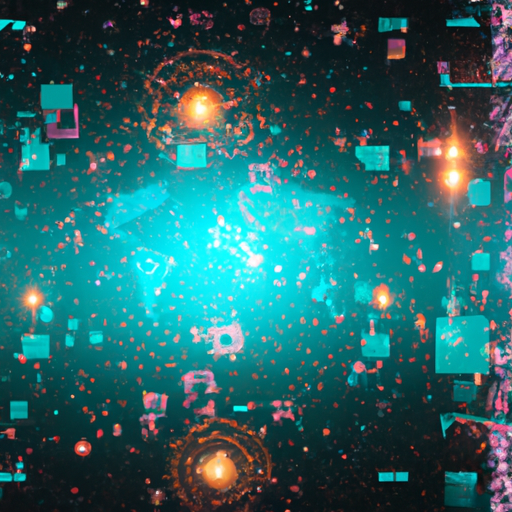Introduction to artificial intelligence: a beginner’s guide
Artificial intelligence (ai) is no longer a concept confined to science fiction novels and futuristic movies.
Today, ai is transforming industries, enhancing our daily lives, and shaping the future in ways we could only imagine a few decades ago.
In this article, we’ll take you through an exciting journey to understand what artificial intelligence is, its various types, and how it impacts our world.
What is artificial intelligence?
Artificial intelligence refers to the simulation of human intelligence in machines that are programmed to think and learn like humans.
These intelligent systems can perform tasks that typically require human cognition, such as problem-solving, decision-making, speech recognition, and language translation.
To put it simply, ai enables machines to mimic human capabilities.
The history of artificial intelligence
The concept of artificial intelligence dates back to ancient myths and stories where lifeless objects were given human-like characteristics.
However, the formal foundation of ai was laid in the mid-20th century with pioneers like alan turing and john mccarthy.
Turing’s famous question “can machines think?” Set the stage for future explorations in ai.
In 1956, mccarthy coined the term “artificial intelligence” at the dartmouth conference, marking the official birth of ai as a field of study.
Types of artificial intelligence
Ai can be broadly classified into three types:
1. Narrow ai (weak ai): this type of ai is designed for a specific task or a narrow range of tasks. Examples include voice assistants like siri and alexa or recommendation algorithms used by netflix.
2. General ai (strong ai): general ai aims to perform any intellectual task that a human can do. It possesses generalized cognitive abilities similar to those of humans.
3. Superintelligent ai: this hypothetical form of ai surpasses human intelligence in all aspects—creativity, problem-solving skills, and even social intelligence.
How does artificial intelligence work?
Ai systems function through various techniques:
– Machine learning: a subset of ai where machines learn from data patterns without being explicitly programmed.
– Neural networks: inspired by the human brain’s structure; these networks consist of interconnected nodes that process information similarly to neurons.
– Deep learning: a specialized form of machine learning using neural networks with many layers (deep neural networks).
– Natural language processing (nlp): enables machines to understand and interpret human language.
Imagine feeding thousands of cat images into an algorithm; over time, it learns to identify cats in new images accurately—a process known as machine learning.
Applications of artificial intelligence
Ai has found its way into numerous sectors:
Healthcare: from diagnosing diseases using image recognition to personalizing treatment plans based on patient data.
Finance: automating trading processes and detecting fraudulent activities through pattern recognition.
Retail: enhancing customer experiences with chatbots and personalized recommendations.
Transportation: enabling self-driving cars that navigate roads safely without human intervention.
These examples merely scratch the surface—ai’s potential applications are virtually limitless!
The impact of artificial intelligence on society
While artificial intelligence offers incredible benefits across various domains—efficiency improvements, cost savings—it also raises important ethical considerations:
1. Job displacement:
Automation may lead to job losses as machines take over repetitive tasks previously performed by humans.
However, new job opportunities will emerge requiring advanced skills such as programming or data analysis.
2. Privacy concerns:
With increased data collection comes heightened privacy risks; ensuring robust cybersecurity measures becomes crucial.
3. Bias and fairness:
Biases present in training datasets can perpetuate unfair outcomes when deployed at scale; ethical guidelines must govern algorithm development processes.
4. Autonomous weapons:
The use of autonomous weapons poses significant threats if not regulated properly; international treaties may be necessary for responsible usage.
Despite these challenges—and perhaps because they exist—the need for continued research into ethical frameworks surrounding artificial intelligence remains paramount.
The future of artificial intelligence
The future holds tremendous promise for artificial intelligence advancement:
1. Enhanced human-ai collaboration:
Humans collaborating seamlessly with intelligent systems will become commonplace across industries—from healthcare professionals working alongside diagnostic algorithms—to engineers designing infrastructure projects aided by predictive analytics models!
2.Improved personalization:
As machine learning algorithms evolve—they’ll deliver increasingly tailored experiences—from recommending products based on individual preferences—to offering customized educational content suited specifically towards learners’ needs!
3.Smart cities:
Urban areas equipped with interconnected sensors leveraging real-time analytics—will optimize traffic flow reduce energy consumption enhance public safety among other benefits making cities more livable sustainable places!
In conclusion understanding what constitutes ‘artificial-intelligence’ along-with its historical context different types underlying technologies applications impacts societal implications possible future directions provides comprehensive insight into one most transformative fields modern era!

